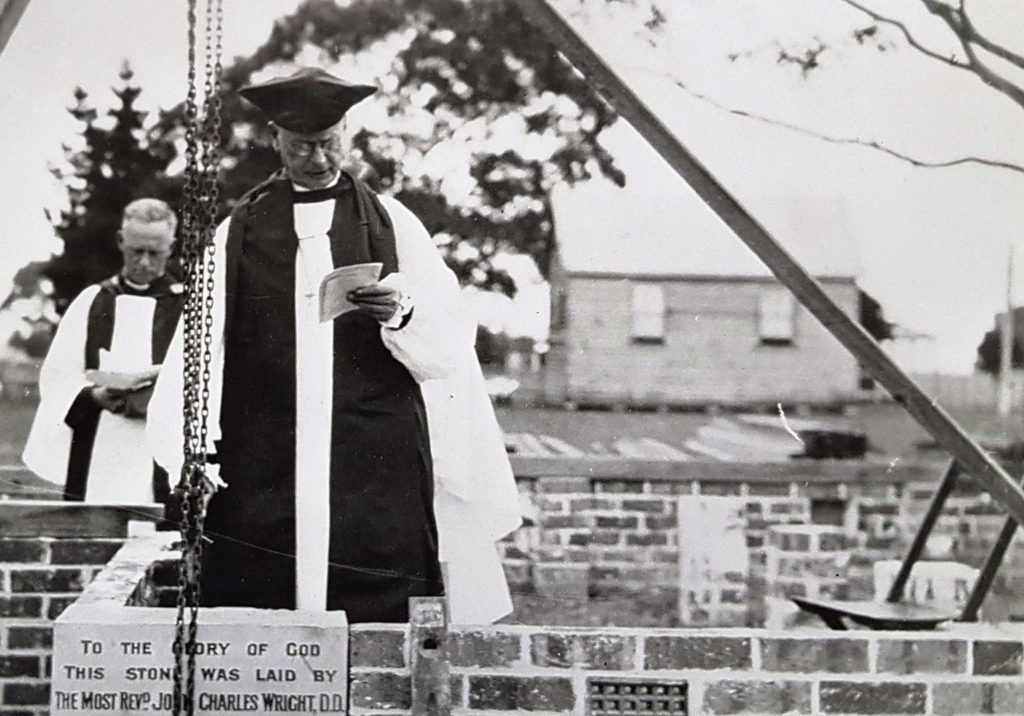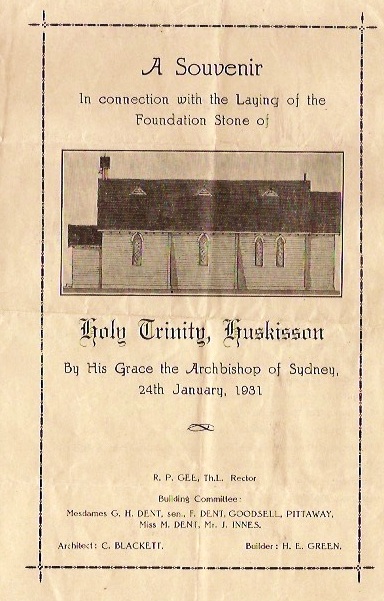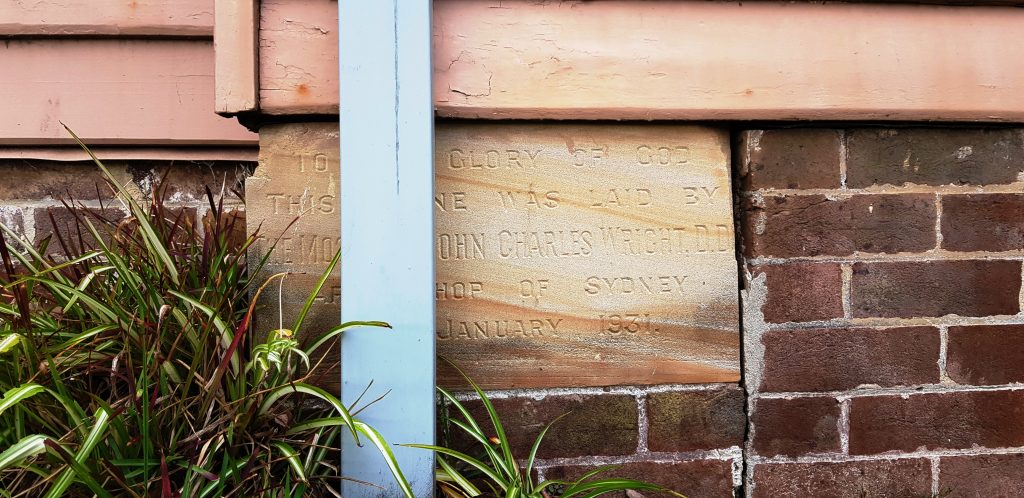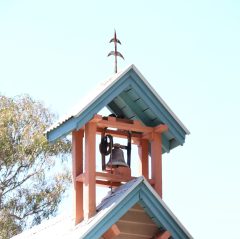
In 2019 Graham Quint, Director of Conservation at the National Trust commented on the architectural sophistication and architectural significance of this Cyril Blacket building in comparison with other vernacular churches in the region. He praised its:
Gothic pointed windows and doors, leadlight glazing and roof framing which cleverly references the traditional cathedrals of Europe (a high A-frame timber roof truss which uses solid braces at the spring-line, lightweight steel bottom chords and external buttresses to manage the sideways thrusts). It is a sophisticated, yet unprepossessing design by a significant architect with immense experience in this specific genre and demonstrates that, sometimes, it takes great skill to make something look simple. Huskisson (and the Shoalhaven district) should be proud to have such a building.
Holy Trinity Church, Huskisson: Timeline
1930: The country was in the grip of what became known as The Great Depression. This did not stop the little congregation in Huskisson from going ahead with plans for a new church building. The earliest mention of fund raising for the church was made way back in 1903, and it is possible that this had gone on for years, interrupted by war and held back by the smalless of the village and congregation. But now the project was ready to go full steam ahead. Local personality Cyril Blacket drew up plans. These were completed in November 1930, and for a small fee the plans were approved by the Diocesan building surveyor, appointed to make sure that church plans got the stamp of approval from the church hierarchy. By the end of the year ten tenders were received to build the new church. The job went to A. E. Green, of Jervis Street, Nowra.

The Church was officially opened by Dean of Wollongong, Rev E Walker on the 4th April and by early June the local building committee had mad e the final payment to the builder. The cost was £482. 50, which would have been about $45, 300 in 2019.[i]
1936: The church was not consecrated until 21st March in 1936. Dr Mowll, the Archbishop of Sydney did the honours.[ii]
1937: 1st October: Huskisson made a provisional parish – i.e. it was separated from Nowra. A curate appointed and later in the month Huskisson’s first rector, the Rev. Gordon King, was inducted.
1938: This was a big year: the Sesquicentenary of European settlement in Australia. There were celebrations across NSW, including commemorative tree planting ceremonies. It was decided that the Shoalhaven’s allocation of trees should be planted in the Huskisson church yard on the weekend of 12/13th March. This coincided with the 2nd anniversary of consecration of the church and events were both religious and secular. On the Saturday there were services, and afternoon tea in the school hall at the cost of sixpence. In the evening tea and a concert in the School of Arts (now the Huskisson Pictures) cost 2 shillings or 5 shillings for a family. The MC for the concert was the local member of parliament, Henry J Bate and the entertainment consisted of musical performances from artists across the Shoalhaven and a play performed by the Tomerong Social Club. On Sunday a visiting preacher from Port Kembla officiated and the Archbishop made an appearance for an afternoon service, ‘at considerable effort and inconvenience.’ This was followed by a formal tree planting ceremony. Bates planted a tree and so did several local dignitaries and members of old families of the district.[iii]
The church held the usual services. Floral arrangements adorned the building for Sunday services. It was decorated for Harvest Thanksgiving, christenings, weddings and funerals. Along with the original church, now the hall, it was used for fundraising fetes, lantern lectures, Women’s Guild meetings and so on. Official events were held for Anzac Day and community events such as flower shows and fairs connected the place to more than just religious functions. People tethered their horses and parked their carriages and carts at the rear of the church and caught up with each other’s gossip after services, Sunday school lessons were taught, the grass was mowed and the gutters cleaned and fences mended, all through voluntary work of parishioners.

Over the years local parishioners donated to upkeep and improvement of the church. In 1947 Alfred Settree, a local boat builder, gave a stained glass window installed in memory of his wife, Henrietta. Others gave furniture, a piano, an upgraded alter, a lichgate – along with practical things such as heating, lighting and carpet.
In 1953 the original stringy bark split shingled roof was replaced by iron by local builder, Bob Martin and in 1994 an extension to the foyer was created and a ramp for disabled was installed.
In the 21st Century plans were underway to sell the property and in 2014 the church was deconsecrated. Traditional services were held for a few more years as the older parishioners were unhappy at its proposed closure but eventually it closed its doors.
The community made many representations to the Anglican Church Property Trust, and to the head of this body, the Anglican Archbishop of Sydney, asking for consideration of both the heritage value of the property and the sensitivities contained in its burial grounds. None of this elicited any positive consideration until the newly appointed Archbishop Kanishka Raffel wrote to the Huskisson Heritage Association on 24th June, 2021 to say:
I am writing to assure you that I regard this matter as one of the utmost seriousness and I am engaging with the issue asa matter of high priority. I am particularly conscious of the deep feeling of the Indigenous community.
In the following days, local parishioners removed the pews and other furniture from the Blacket Church and on 3rd July 2021, the property was sold to developer Stephen Bartlett. The property was never publicly advertised for sale, and the details of the eventual sale are subject to a confidentiality agreement by both parties.
marker place to put sale details when they are available
In 2018 the parish applied to be able to use the funds from sale of the property towards a new Faith Centre to be built at the Crossroads in Vincentia.
In 2019 Graham Quint, Director of Conservation at the National Trust commented on the ‘architectural sophistication and architectural significance’ of this Cyril Blacket building in comparison with other vernacular churches in the region. He praised its:
Gothic pointed windows and doors, leadlight glazing and roof
framing which cleverly references the traditional cathedrals of Europe (a high
A-frame timber roof truss which uses solid braces at the spring-line,
lightweight steel bottom chords and external buttresses to manage the sideways
thrusts). It is a sophisticated, yet unprepossessing design by a significant
architect with immense experience in this specific genre and demonstrates that,
sometimes, it takes great skill to make something look simple. Huskisson (and
the Shoalhaven district) should be proud to have such a building.[iv]




[i] P Brown, ‘Building Construction, Huskisson Church, 1985’, handwritten report, possibly for an assignment, TAFE or similar. Attachments to this document include copies of invoices and receipts between builder and church Building Committee, sourced from church records.
[ii] Shoalhaven Telegraph 25th March 1936.
[iii] Church of England News for Provisional District of Huskisson, No. 5, March 1938, sourced at Jervis Bay Maritime Museum; Helen Ruttley notes on Huskisson Holy Trinity Church, typescript, held at Shoalhaven Historical Society, Nowra.
[iv] Graham Quint to Russell Pigg, GM of Shoalhaven City Council, 26 April 2019.
